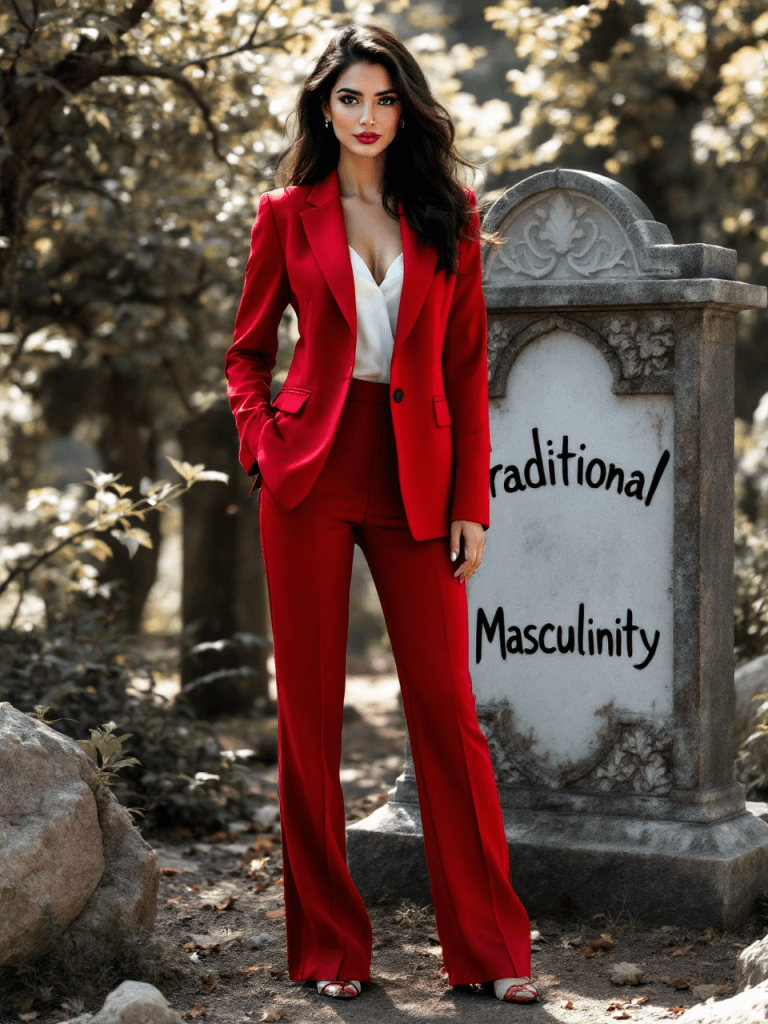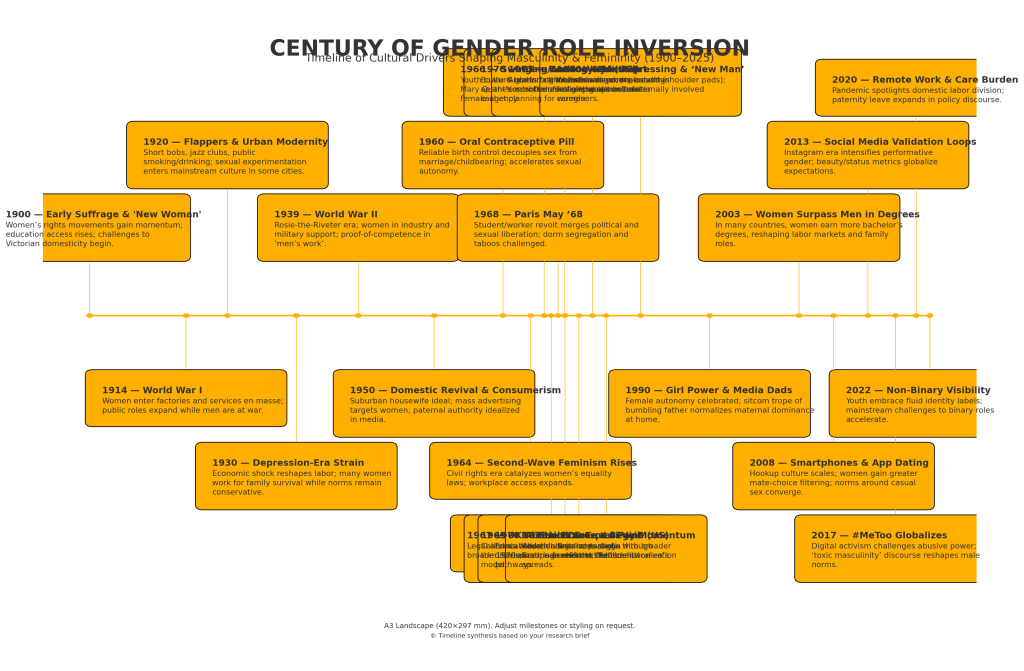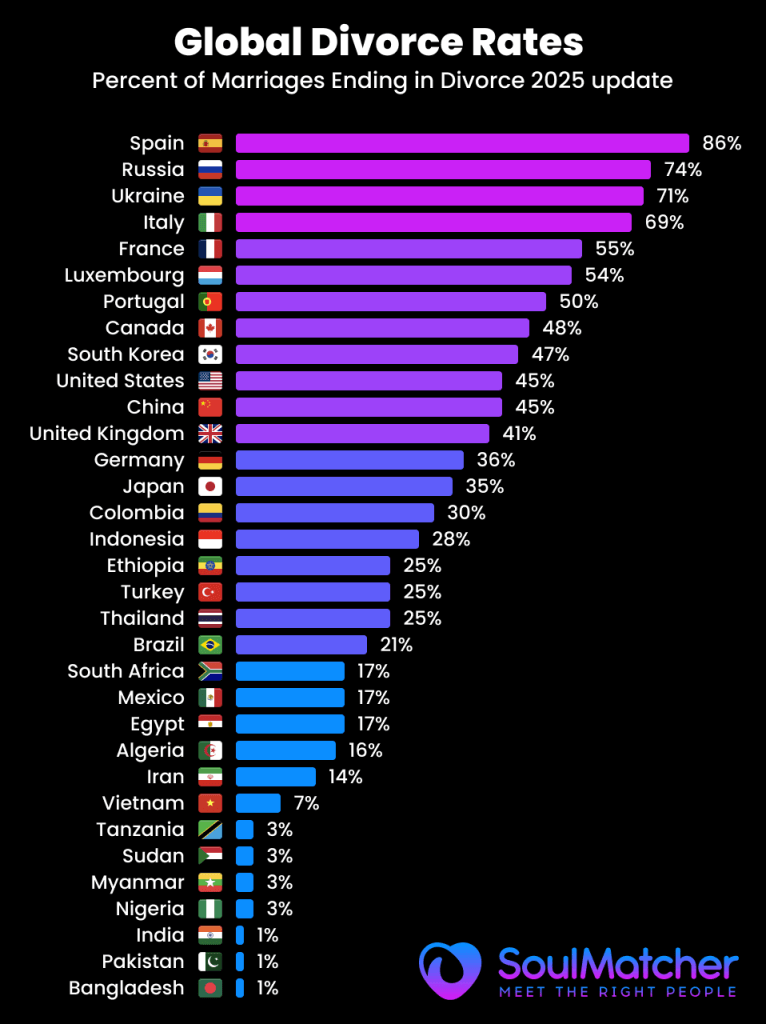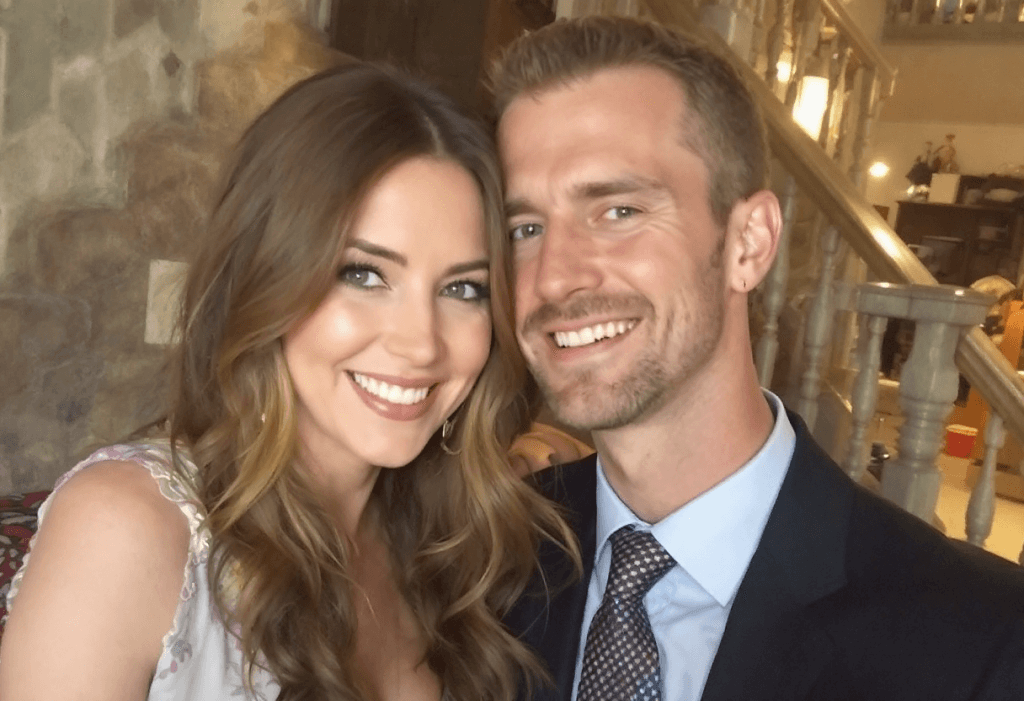
Over the past half-century, traditionally gendered behavioral traits have undergone dramatic shifts worldwide. Women have increasingly adopted characteristics historically associated with masculinity – such as assertiveness, career dominance, and leadership – while men have been encouraged to display traits historically deemed feminine – greater emotional openness, nurturing, and deference. This article examines how and why these role reversals have unfolded and argues that, despite intentions toward equality, the erosion of traditional masculinity and femininity has incurred broad societal costs. Drawing on interdisciplinary insights – including evolutionary psychology, sociocultural analyses, and contemporary commentaries – the paper explores the impacts on family stability, romantic relationships, psychological health, and gender identity. Evidence suggests that feminist and media influences have promoted these changes by valorizing female independence and critiquing “toxic” male behaviors. However, the inversion of gender roles is linked to rising family fragmentation, diminished romantic satisfaction, and confusion in self-identity. The analysis highlights global patterns: families with absent or disempowered fathers show worse outcomes for children, couples experience loss of mutual respect when traditional role complementarities vanish, and younger generations report unprecedented levels of gender-identity fluidity. The article concludes that the decline of clear masculine and feminine archetypes – while yielding certain gains – has also introduced harmful consequences that merit serious consideration in policy and cultural discourse.
Introduction
Over recent decades, gender roles have undergone a profound transformation across many societies. Traits once strongly associated with traditional masculinity – such as physical and emotional toughness, leadership in family and public life, and stoic self-reliance – have been deemphasized or even stigmatized, while traits traditionally deemed feminine – such as sensitivity, emotional expressiveness, and nurturance – have been increasingly encouraged in men. Concurrently, women have attained greater economic and political power and are often socialized to be more assertive, independent, and career-oriented, mirroring qualities historically ascribed to men. These shifts stem from complex drivers, including the feminist movement’s challenge to patriarchal norms, changing economic necessities that draw women into the workforce, and media/cultural messaging that celebrates gender role flexibility.
While greater equality and shared responsibilities are laudable goals, the central thesis of this article is that the blurring and inversion of traditional gender traits have also brought unintended negative consequences for society globally. Evidence has emerged of strain in family dynamics, with rising rates of single-parent households and weakened paternal involvement. Romantic relationships too appear to suffer when conventional complements of masculine and feminine energies are reversed or lost, often leading to diminished mutual attraction and respect. Psychologically, both men and women report new stresses – men grappling with uncertainty about their role and self-worth in a climate that often labels traditional maleness as problematic, and women facing burnout as they juggle careers and family leadership in the absence of supportive masculine partners. Even individuals’ gender identity development may be affected, as younger generations increasingly question the binary categories of male and female, coinciding with the erosion of clear role models in home and media.
This paper proceeds as follows. First, it reviews relevant literature and commentary on the evolution of gender roles, highlighting the role of feminism, media, and cultural narratives in redefining masculinity and femininity. Next, it outlines theoretical frameworks for understanding gendered behavior, contrasting evolutionary psychology perspectives with social-constructionist views. A historical overview then traces how gender norms have shifted from pre-modern times to the present. The core of the paper is an analysis and discussion of the societal impacts of these shifts – on family stability and child development, on romantic relationship dynamics, on mental health and interpersonal respect, and on gender identity formation. In each domain, the argument is supported by evidence (e.g. demographic trends, psychological studies, and synthesized insights from contemporary observations). The article adopts a global lens, noting that while much data comes from Western contexts, similar patterns and challenges are emerging worldwide as traditional gender norms give way. Finally, the conclusion considers the implications of these findings, suggesting that a re-balancing of masculine and feminine virtues may be needed to mitigate the harms identified.
Literature Review: Eroding Gender Norms in Modern Discourse
Numerous studies and cultural analyses have documented the shift in gender role attitudes and its perceived effects. Feminist scholarship and advocacy, especially since the mid-20th century, explicitly aimed to dismantle traditional gender hierarchies. Feminist theorists argued that traits once idealized as “feminine” (e.g. submissiveness, domesticity) were socially imposed limitations rather than innate, and they encouraged women to cultivate traditionally masculine traits like ambition, competitiveness, and self-reliance. Over decades, social messaging and educational curricula reinforced these ideas: girls were told they could and should do anything boys do, and women’s roles expanded well beyond the home. At the same time, notions of masculinity were critically examined; behaviors such as aggression or authoritarian leadership were increasingly condemned under labels like “machismo” or “toxic masculinity.” Indeed, public discourse began equating normal male displays of anger or dominance with toxicity, sending a clear signal that men must reform their behavior. Consequently, many men internalized a need to be more agreeable, emotionally open, and conflict-averse to avoid social disapproval.
Parallel to these intellectual currents, media representations have both reflected and propelled changing gender norms. In popular media, the archetype of the strong, wise father figure steadily gave way to more derisive portrayals of fathers and husbands as bumbling or emotionally clueless. For example, one content analysis observes that from mid-century sitcoms like “Father Knows Best” to more modern comedies (“Married…With Children,” “Modern Family,” etc.), television fathers are typically depicted as foolish or inept, while wives are competent and must “rescue” or guide their husbands. Advertising studies likewise find that men in commercials are seldom shown as nurturers, whereas women are frequently depicted as caring, capable parents. These portrayals reinforce a cultural narrative that mothers/women are the reliable backbone of family and social life, whereas fathers/men are optional or secondary. Such messaging, subtle or overt, contributes to an environment in which traditional male authority is undermined and male passivity is normalized.
Contemporary social research provides mixed assessments of these changes. On one hand, many observers highlight benefits: greater gender-role flexibility has allowed women to pursue careers and personal goals, and encouraged men to be more involved fathers and emotionally accessible partners. Survey data indicate that a majority of people believe the increasing share of women in the workplace and men participating in childcare have made it easier for women to succeed professionally and for families to attain economic stability. On the other hand, scholars in family studies and psychology have raised concerns about unintended drawbacks. For instance, some analyses link the decline of distinct parental roles to weaker family cohesion and child outcomes. Children in single-parent or father-absent homes – a situation far more common now than a few generations ago – face elevated risks of poverty, behavioral problems, and academic challenges. Relationship counselors also note a pattern in which couples struggle when a “role reversal” occurs: women report frustration or loss of respect toward overly compliant husbands, while men in egalitarian marriages sometimes experience role confusion or erosion of self-esteem (especially if they feel disallowed from any assertive or provider role). These observations align with a growing genre of commentary (often found in self-help or “manosphere” literature) which suggests that modern relationships suffer from a “breakdown of masculine leadership” and a lack of polarity between the sexes. Though typically outside academic channels, such commentaries synthesize psychological insights and anecdotal evidence, warning that the devaluation of traditional masculinity and femininity may be destabilizing private and public life.
In summary, existing literature and cultural discourse provide a backdrop of strongly contrasting views. Progressive narratives celebrate the freedom from rigid gender roles, whereas traditionalist or evolutionary viewpoints caution that these roles served important functions that are being lost. This article builds on the latter perspective, using both empirical data and rephrased insights from contemporary analyses to rigorously examine how inverted or blurred gender traits may be contributing to social problems.
Theoretical Framework
Understanding the impact of changing gender behavior requires a theoretical lens on why certain gendered traits exist in the first place. Two broad frameworks offer divergent explanations: evolutionary psychology and social constructionism.
Evolutionary psychology posits that many sex-differentiated behaviors have deep biological roots shaped by millennia of human evolution. From this perspective, traditional male and female traits conferred survival or reproductive advantages in ancestral environments. For example, male tendencies toward physical protectiveness, risk-taking, and status competition could be understood as evolutionary adaptations for securing resources and defending kin. Female tendencies toward nurturing, social bonding, and mate selection might likewise have evolved to ensure offspring survival and stable pair-bonding. Evolutionary theorists argue that, despite vast cultural changes, underlying psychological preferences remain. Women, in aggregate, still instinctively prefer male partners who exhibit strength, confidence, and leadership – signals of an ability to provide protection and stability – even if modern norms discourage openly acknowledging this. In line with this, some researchers suggest that women “test” men’s resolve or strength (often subconsciously) to assess their fitness as partners, a behavior rooted in biology. If a man consistently fails these tests by being easily controlled or overly submissive, it may trigger an evolutionary-based loss of attraction in the woman. In short, the evolutionary framework predicts that drastic reversals of gender roles will clash with ingrained predispositions, producing relational friction and dissatisfaction.
Conversely, social constructionist and gender role theories argue that behavioral differences between men and women are largely products of culture, socialization, and situational factors rather than fixed biology. According to this view, humans are highly adaptable, and masculinity or femininity are fluid concepts that societies redefine over time. Social role theorists point out that in many pre-industrial societies, labor was divided by gender largely due to practical necessity (e.g. women as child-bearers took on childcare, men’s greater average size suited them to physically demanding tasks). As those necessities change – with technological advancement, contraception, and legal rights – there is no inherent barrier to women and men swapping roles. From this perspective, encouraging more overlap in gender traits (e.g. nurturing fathers, ambitious mothers) should have no adverse effect on well-being, and might even yield fairer, more well-rounded individuals. Indeed, proponents note that societies with higher gender equality often report high life satisfaction and that many individuals thrive when not constrained by stereotype. A sociocultural framework also emphasizes the power of ideology and media in shaping preferences: if young boys and girls are raised with certain expectations, they will tend to fulfill them. For instance, campaigns against “toxic masculinity” and for “strong independent women” are attempts to socially re-engineer what behaviors are considered desirable in men and women. To a significant degree, these efforts have succeeded in changing surface behaviors and self-concepts, as evidenced by surveys where large shares of the public support non-traditional roles and believe society should be more accepting of role-crossing.
These two frameworks are not mutually exclusive, and a complete understanding of gender dynamics arguably lies in recognizing both innate predispositions and cultural plasticity. This article leans on the evolutionary perspective to hypothesize why the recent extreme shifts might be maladaptive, but it also acknowledges the social forces that have enabled those shifts. In examining outcomes, we consider that if evolutionary drives are real, we would expect to see stress and dysfunction when they are ignored – for example, rising conflict in marriages where a man’s role is greatly diminished. At the same time, the role of social narratives is evident in phenomena such as generational differences in gender identity (likely influenced by changing norms). Thus, the analysis will integrate these lenses: assuming there are natural complementarities between masculine and feminine roles that fulfill psychological needs, and exploring how cultural changes have disrupted those complementarities.
Historical Overview of Gender Role Changes
Traditional Era (Pre-20th Century): In most cultures historically, gender roles were clearly defined and distinct. Men were predominantly the providers and protectors, tasked with securing food, income, and safety for the family, as well as representing the household in public life. Women were primarily the caregivers and homemakers, raising children, managing domestic affairs, and providing emotional support. These roles were reinforced by legal systems (which often restricted women’s rights to own property or work) and by social norms rooted in religious or communal values. Adherence to traditional masculinity and femininity was not merely expected but often necessary for economic survival. Importantly, this arrangement, though limiting in many ways (especially for women’s autonomy), also created a stable complementarity: each gender’s contributions, though different, were considered equally vital to family and social functioning. Men derived identity and pride from being reliable protectors and decision-makers, and women from being nurturing mothers and moral anchors of the family. Romantic courtship and marriage in these contexts were built on differentiation: each partner brought a contrasting set of skills and emotional strengths that, ideally, balanced the other.
20th Century Transitions: The early to mid-20th century saw seismic disruptions to these age-old patterns. Industrialization and world wars began pulling women into the workforce out of necessity, planting seeds of change. The post-war era and the rise of the second-wave feminist movement (1960s–1980s) then accelerated role redefinition. Feminists challenged the notion that a woman’s place is solely in the home, highlighting the injustices of female exclusion from education, professional careers, and political power. Legal reforms and changing attitudes led to more women pursuing higher education and entering virtually all professions. By the late 20th century, the dual-income household had become common in many countries, and financial or social survival no longer strictly required the old role split. At the same time, the sexual revolution and liberalization of divorce laws (e.g., introduction of no-fault divorce in many jurisdictions) made marriage less of an economic institution and more of an optional, emotional partnership. Consequently, marriage rates declined and divorce rates climbed sharply. Single-parent families, once relatively rare, multiplied. In the United States, for example, only about 9% of children lived with a single parent in 1960, but by 2012 that figure had risen to 28% – a profound shift in family structure within two generations. Similar trends of increasing divorce and out-of-wedlock birth rates were observed across much of Europe and other parts of the world undergoing social modernization. This meant that many children grew up with either no father in the home or a markedly reduced fatherly presence compared to past eras.
Cultural media both reflected and furthered these trends. The late 20th century gave rise to media icons of female empowerment – from television characters to real-world political and business leaders – which provided alternative role models to traditional wives and mothers. Simultaneously, popular culture often caricatured or critiqued the traditional male. As noted, family sitcoms from the 1980s onwards (e.g., The Simpsons, Everybody Loves Raymond) typically portrayed the husband/father as well-meaning but incompetent in domestic life, in contrast to the competent, organized wife. While sometimes intended as humor, this trope reinforced a narrative that fathers are peripheral or incapable in family roles. By the turn of the 21st century, an entire generation had grown up with far less exposure to strong paternal authority in either real life or fiction. In schools and workplaces, sensitivity training and egalitarian values predominated, further blurring lines: young men were told to shed aggressive instincts and be cooperative teammates; young women were told to be bold leaders.
21st Century and Globalization: In the new millennium, these Western-originated changes spread globally through the forces of globalization and international advocacy for women’s rights. Even in traditionally patriarchal societies, there are observable shifts – for instance, increasing urbanization and education of women in parts of Asia, Africa, and Latin America are altering family dynamics. However, the consequences of rapid change are now becoming apparent. We have entered an era in which large numbers of men and women are navigating personal and family life without the clear script that their ancestors had. The remainder of this article examines the fallout of this grand social experiment: how have these role changes affected key domains of life? We turn now to the analysis of those impacts.
Analysis and Discussion
Impact on Family Dynamics and Child Development
One of the clearest areas where changing gender behavior has reverberated is the family unit. The weakening of traditional masculinity – particularly the role of the father as head of household – has coincided with a measurable decline in family stability. As noted, single-mother households have skyrocketed in prevalence since the 1960s. This trend means that many children grow up with limited involvement from their father, or with a father figure who, even if present, is less authoritative or engaged than in past models. Research consistently shows that such father absence or disengagement has detrimental effects. Children with uninvolved or absent fathers tend to exhibit more behavioral problems, lower academic achievement, and higher likelihood of emotional difficulties compared to children from two-parent, involved-father homes. The presence of a positively involved father correlates with reduced risk of delinquency and better social adjustment, especially for boys. For example, one review found that having a father figure during adolescence exerts a protective effect against criminal or antisocial behavior in young men, whereas early-life father absence is associated with higher odds of juvenile delinquency and adult criminality. These outcomes are often attributed to the loss of the stabilizing influence and role modeling that fathers traditionally provided. A father who embodied balanced masculine qualities – discipline, authority, as well as care – historically helped instill in children a sense of security and model of male identity.
In families where gender roles are inverted rather than the family being broken, a subtler dynamic can undermine healthy functioning. If the mother is the primary (or sole) disciplinarian and provider and the father is essentially relegated to a secondary, more submissive role, children may internalize an unusual script: mother as the figure of authority and father as a figure of acquiescence. While many mothers heroically juggle both roles, the imbalance can breed tension. The mother may become overburdened and stressed, whereas the father, lacking a clear role, may withdraw or become passive to avoid conflict. Children in such environments might struggle with setting their own expectations for adult life – e.g. boys may not learn how to assume responsibility and assert healthy authority, having seen their father abstain from it, and girls may not easily respect male figures if their primary example was not respected within the home. Furthermore, when a father’s authority is constantly undermined or he defers all decisions to the mother, children can learn to bypass the father entirely, weakening paternal bonds.
It is important to emphasize that the quality of parenting matters more than the gender per se – many single mothers or stay-at-home fathers do an excellent job raising children. The concern is that, on average, the broad societal shift away from the traditional two-parent, dual-gender-led family has introduced stressors that were previously mitigated by clearer role division. Single parents (the majority of whom are mothers) often face economic hardship and have less time to supervise and nurture children, contributing to higher rates of childhood poverty and developmental risks. Even in dual-parent households, if the father’s role is reduced to “helper” at best, his potential positive impact can be diminished. By contrast, when fathers are actively engaged and allowed to contribute their complementary style of parenting (which often involves different play patterns, risk calibration, and discipline approach), children benefit from a richer developmental environment. Studies of father–child play, for instance, suggest it uniquely contributes to children’s self-regulation and social skills. Thus, the global trend of marginalizing fatherhood – whether through family breakdown or role inversion – appears to be depriving many children of important emotional and social capital. This is a significant societal cost that coincides with the erosion of traditional masculinity in the home.
Effects on Romantic Relationships and Marital Stability
Perhaps the most immediate arena where the inversion of gender traits plays out is in heterosexual romantic and marital relationships. The dynamics of attraction and long-term compatibility are intimately tied to the interplay of masculine and feminine energies. Numerous relationship counselors and psychologists observe that couples often fare best when they maintain a balance of similarities and differences – sharing core values and mutual respect, but also embodying complementary strengths. Traditional gender roles provided one template of complementarity. Today, however, many couples find themselves in uncharted territory, negotiating roles without clear defaults. This has led to novel tensions that our forebears may not have faced.
One common pattern reported in modern relationships is a cycle where the man, eager to be a “good” partner by contemporary standards, becomes excessively accommodating, emotionally open, and approval-seeking, while the woman correspondingly becomes more critical, leading, and emotionally distant. Essentially, the man amplifies traditionally feminine relationship behaviors and the woman amplifies masculine ones. Empirical and anecdotal evidence suggests this role reversal is disastrous for sexual and romantic attraction. When the man relinquishes leadership and becomes needy, the polarity that sparked initial attraction often evaporates. In the early stages of courtship, it is typically the man’s confidence, initiative, and sense of purpose that create attraction, with the woman responding with warmth and support – a natural “dance” of pursuing and yielding. If as the relationship progresses, the man switches into a more submissive stance (“prioritizing her needs over his own goals and interests”) and the woman is forced to “take on the decision-making and dominant role,” the original dynamic flips. Both partners tend to become unhappy in ways they often cannot articulate. The woman may complain that her partner is no longer the man she fell in love with, that he has lost ambition or backbone. She might feel burdened by having to make all the decisions and secretly yearn for him to “step up” – feelings that breed frustration or contempt if unmet. The man, on the other hand, might be confused why his increased kindness and sensitivity are met with colder responses; he may feel emasculated and resentful that his efforts to please go unappreciated.
This phenomenon is well documented in the relationship psychology literature under concepts of respect and “polarity.” Romantic desire appears strongly linked to a woman’s ability to respect her partner. If a man is overly compliant – always deferring to her, seeking permission, and fearing to assert himself – he inadvertently signals a lack of self-respect, which in turn undermines her respect for him. As one commentary puts it, a woman in this scenario “can’t look up to you, which is essential for female attraction,” because the man signals that her opinion matters more than his own principles. Over time, her attraction erodes even if she genuinely loves him as a person. Meanwhile, the man may become increasingly frustrated that nothing he does seems to make her happy. Often, as studies and counselors note, men make the mistake of doubling down on the “nice guy” behaviors, becoming even more giving and emotionally effusive in hopes of winning back her affection – but paradoxically, this further kills her passion. It is, as some experts call it, a “cruel irony” or psychological trap: the more the man surrenders his frame to please his partner, the less pleased she becomes. One analysis of modern relationships describes this trap succinctly: “The more you try to make her happy by surrendering control, the less happy she becomes. The more you sacrifice your own needs for hers, the more she resents you for being weak enough to do it.”. In essence, what many couples are encountering is that certain age-old dynamics in male-female attraction have not disappeared just because society told us to behave differently. Women “say they want nice guys, but their behavior consistently demonstrates attraction to men who embody the opposite traits” – a disconnect between stated ideals and instinctive response.
The consequences for marital stability are significant. Marriages that descend into this pattern of reversed roles often become sexless and rife with mutual resentment. Lack of intimacy is a frequent complaint; studies of “modern marriage crises” find that wives who lose respect for passive husbands often withdraw affection, sometimes even experiencing a visceral lack of attraction or a stress response to their husband’s touch. Husbands, feeling rejected and unsure how to reclaim their partner’s admiration, may either become angry or sink into depression. In worst-case scenarios, such relationships end in divorce, or persist as unhappy cohabitations “behind closed doors.” Some cultural critics have gone so far as to argue that the institution of marriage itself is failing men in its modern form, because it “has been systematically designed to destroy men’s happiness, drain their resources, and eliminate their authority”. While this view may be extreme, it resonates with men who feel that marriage now asks them to be providers and homemakers and always deferent partners – effectively a doubling of duties with none of the traditional respect or leadership they might have expected. Indeed, in many contemporary marriages, men report feeling like “worker drones” who toil at work and at home but receive little appreciation or authority. The wife, having been conditioned to be independent, may see her husband as useful but not someone to defer to in any domain. This inversion of the traditional partnership model can hollow out the emotional core of a marriage. Globally, it may contribute to rising divorce rates and people delaying or forgoing marriage; if men perceive marriage as offering no respect or stable role, and women cannot find men they both love and respect, fewer successful long-term unions will form.
In sum, healthy romantic relationships appear to require a balance of power and a reciprocal appreciation of what each partner brings. Traditional masculinity – when not distorted into abuse – gave men a defined way to earn respect and gave women a secure framework to rely on. Its dilution has left both sides improvising, often with combustible results. The empirical evidence of marital counseling and social surveys suggests that respect, attraction, and long-term satisfaction have become harder to maintain under the new gender-neutral or reversed-gender paradigms. Many women privately admit to craving men who can “take charge” in the relationship, allowing them to relax their own overstrained control. Many men, likewise, quietly feel most fulfilled when they can protect and lead, and feel emasculated when they cannot. Where couples manage to negotiate new arrangements successfully, it is likely because they still find a complementary equilibrium (for instance, some couples swap roles entirely and are content that way, which is another form of complementarity). But for a large portion of the population, the current climate has produced mismatch and misery between the sexes.
Psychological Health and Gender Identity
Beyond observable outcomes in families and relationships, the deep internal impact of these social changes is evident in the psychological well-being and identity formation of individuals – particularly men. A growing chorus of psychologists and social commentators speak of a “male malaise” or crisis of masculinity in which men, especially young men, struggle to find purpose and positive self-image in a world that seems to have upended the roles their fathers and grandfathers occupied. Traditional male virtues – strength, stoicism, protector mentality – are at times dismissed as outdated or even harmful, yet men are not always offered a clear, achievable alternative ideal. Many men internalize the message that they must never express anger or assertiveness (lest they be labeled abusive or toxic). They attempt to be gentle, egalitarian, sensitive modern men, but doing so can conflict with some of their innate impulses or social expectations in other arenas. The result, for some, is a kind of psychological double bind: “damned if you do, damned if you don’t.” For example, a man who remains calm and non-confrontational with a strong-willed partner may find his concerns consistently ignored – essentially punished for being respectful – until he eventually snaps in anger out of sheer frustration. Yet once he raises his voice, he is immediately chastised for being toxic or failing to communicate properly. As one analysis describes, “Society has spent decades teaching men that anger is toxic… yet [these same men] find themselves in relationships where anger is the only effective communication tool. They’re damned if they get angry…and damned if they don’t, as their concerns get ignored indefinitely. This double bind creates intense psychological pressure.”. Such scenarios can erode men’s mental health, contributing to feelings of helplessness, chronic stress, or depression. Indeed, population statistics show men’s rates of suicide and substance abuse remain significantly higher than women’s in many countries, and some researchers associate this with role strain and the lack of socially approved outlets for traditionally male traits.
Men who fully embrace a more feminized role – aiming to be the empathetic, emotionally vulnerable partner – may also face disappointment and mental distress when their vulnerability is met with lukewarm support or even disdain. Studies indicate that many women, despite conscious goodwill, react negatively to male displays of vulnerability, often perceiving a man’s intense emotional expression as instability or weakness rather than as a call for support. This means men who open up about their insecurities might not receive the empathy they hope for, leaving them feeling even more alienated. Over time, repeated experiences of rejection or disrespect can damage a man’s self-esteem and masculine identity. In severe cases – such as protracted unhealthy relationships – men can develop trauma-like symptoms. For instance, being with a highly domineering or emotionally abusive partner can lead to the man experiencing complex PTSD, loss of identity, and anxiety. One stark description of men in such situations notes that they become “conditioned to anticipate chaos… accept treatment that violates dignity… develop complex PTSD from years of psychological warfare disguised as marriage,” and even lose the ability to trust their own perceptions after prolonged gaslighting. While this describes an extreme “toxic relationship,” it underlines how profoundly a man’s psyche can be broken when he is persistently placed in a submissive, insecure position. His “psychological foundation” can be eroded to the point that he no longer recognizes what a healthy dynamic looks like.
Women, too, face psychological tolls from these shifting gender norms, though of a different character. Many modern women feel tremendous pressure to “have it all” – succeeding in careers, managing households, and often compensating for what they perceive as male underperformance in relationships. Those who adopt very masculine traits (e.g., being highly competitive, suppressing emotion to appear strong) may later struggle with unaddressed emotional needs or burnout. They are told to be independent and not rely on men, yet human intimacy needs have not changed, so this can breed conflict between their conditioned ideals and their private desires. As mentioned earlier, a number of women privately admit they crave the ability to embrace a more traditionally feminine role at home – to not always have to be in charge – but finding a partner who can accommodate that (without compromising equality and respect) is challenging. When women do not find outlets to express feminine energy – such as being caring, being led occasionally, feeling secure enough to be vulnerable – they, too, can experience stress, dissatisfaction, or a hardening of their emotional state. Some research on marital intimacy issues finds that women in marriages with extremely egalitarian or role-reversed setups sometimes experience confusing feelings of unsafety or resentment that they themselves cannot explain, which may be tied to deep-seated expectations of male behavior that are unmet. In other words, despite proudly embracing feminist values, a part of them struggles with the lack of a traditionally masculine counterpart, leading to guilt or internal conflict.
Finally, on the societal level, the blurring of male and female roles has contributed to a broadened conversation about gender identity. With traditional definitions weakened, especially among youth, there is greater exploration of identities outside the binary “man” or “woman.” The rise in individuals identifying as nonbinary or transgender in recent years is a complex phenomenon with many factors (including increased social acceptance and visibility). However, one cannot ignore that young people are growing up in a world where the question “what does it mean to be a man or a woman?” has become difficult to answer. In previous generations, that question was simplified by clear social roles; today it is open-ended. Approximately 5% of American young adults now identify as transgender or gender non-conforming (far higher than older generations), and similar patterns are observed in other Western societies. This suggests that a notable minority of youth feel so disconnected from the traditional gender binary that they claim a different gender identity altogether. While greater freedom of identity is a positive from a human rights standpoint, some theorists argue that the surge in gender ambiguity is partly symptomatic of the loss of guiding role models for masculinity and femininity. Without positive examples of what it positively means to be male or female (as opposed to caricatures or negative portrayals), some young people may find the categories empty or undesirable and seek novel identities that better fit their personal experience. Moreover, for those who remain within the binary, there can still be confusion and anxiety. Many young men, for instance, report feeling unsure how to behave in dating or how to develop a confident masculine self-image without invoking the specter of toxic masculinity. Young women likewise navigate a tension between embracing empowerment and an undercurrent of longing for traditional romance or motherhood, which society might have devalued. The net psychological effect is a generation with high levels of anxiety about relationships and self-definition, as reflected in rising rates of reported mental health issues among youth of both sexes.
In summary, the psychological health costs of rapidly changing gender norms are tangible. Men have faced a collapse of the old identity without a stable new one to replace it, leading to stress, loss of direction, and in some cases pathological outcomes. Women have gained new opportunities but often at the cost of greater stress and, in their personal lives, encountering a dearth of equally strong partners or the permission to express vulnerability. And the very concept of gender identity has been destabilized, with more people than ever before questioning where they fit on the male–female spectrum. These trends underscore that human psychology, forged by both evolution and cultural conditioning, does not instantly adjust to paradigm shifts; there are lagging effects and frictions that manifest as individual and social pathologies.
Media and Cultural Reinforcement of Role Inversion
Throughout these analyses, a recurring theme is the powerful influence of media and cultural narratives in normalizing or even glamorizing the reversal of gender roles – often without equal attention to the downsides. From Hollywood films to social media, the archetype of the “strong female lead” who outperforms male counterparts is ubiquitous, as is the trope of the hapless husband or dorky dad who must be corrected by a wiser wife or even by his precocious children. These portrayals are not merely entertainment; they carry implicit messages about what behaviors are expected or acceptable from each gender. Over time, constant exposure to such media normalizes the idea that men are (or should be) relatively incompetent in domestic and emotional spheres, and that women naturally take charge. Young boys and girls absorb these cues. It is telling, for instance, that commercials and sitcoms rarely show a father confidently and capably taking care of children – unless it is to garner comedic effect – whereas mothers handling traditionally “male” tasks (like being a corporate boss or action hero) are portrayed as aspirational. This skew can create a cultural environment where male leadership is subtly discredited. As one media analysis pointed out, there is a “double standard” in which “competent, wise, emotionally connected mothers” frequently appear alongside “incompetent, foolish, and emotionally disconnected” fathers. The implication, whether intended or not, is that mothers/women must often compensate for subpar men. Over decades, such narratives may erode society’s respect for fatherhood and traditional masculinity, contributing to the phenomena discussed above (men not feeling needed or respected in families, women assuming men will not contribute meaningfully at home).
Moreover, popular culture often rewards female characters for taking on masculine traits (e.g. being aggressive or career-obsessed is depicted as empowering) while male characters who adopt softer traits are sometimes celebrated in theory but mocked in practice. This sends mixed signals. For example, a male protagonist who is sensitive and emotional might be praised within a storyline, but the same story might show him failing socially or romantically until he toughens up. Meanwhile, a female protagonist who is fierce and dominant is lauded as a hero. These recurrent patterns can reinforce the inversion: men learn that to be liked, they should relinquish any traditional assertiveness; women learn that to be respected, they should avoid appearing traditionally feminine or yielding.
Social media and online discourse further amplify these cultural currents. In the digital arena, movements that challenge traditional gender norms often gain strong traction – for instance, campaigns promoting phrases like “the future is female” or denouncing “patriarchy” are widespread. While empowering for some, such messaging can inadvertently marginalize boys and men or paint masculinity with a broad brush of negativity. Young men growing up in this environment might feel that there is something inherently wrong with being male, or they may swing to the opposite extreme by embracing antifeminist subcultures in reaction. Neither outcome fosters healthy identity. Meanwhile, young women are often encouraged by online communities to be increasingly self-reliant and suspicious of men, which can preclude developing cooperative relationship skills. The cultural script in many Westernized milieus has become a zero-sum gender competition: if women win, men lose, and vice versa. This adversarial framing erodes the spirit of partnership. It also ignores the possibility that traditional gender expressions can be positive-sum (both sides contributing differently but harmoniously).
It is worth noting that outside the Western cultural sphere, many societies still uphold more traditional gender portrayals in media – however, they too are experiencing change via globalization. For example, Bollywood films in India historically emphasized hyper-masculine heroes and sacrificial mothers, but recent films show more independent heroines and gentle, family-oriented male leads. In East Asia, there is an emergent trend of “soft masculinity” in pop culture (such as K-pop stars who exhibit androgynous beauty and emotional sensitivity), influencing youth ideals. These global shifts in media representation indicate that the questioning of traditional masculinity/femininity is a worldwide phenomenon, not confined to the West.
In conclusion, media and cultural narratives have been both engines and mirrors of the trend toward role inversion. They provide the stories that individuals use to make sense of their own lives. By largely celebrating the erosion of traditional roles – or by satirizing those roles – media have helped entrench the very changes that are linked to the social difficulties discussed. If cultural forces can be harnessed in the opposite direction (for instance, by portraying more positive models of involved fathers or by showing that a woman can be strong while still valuing a man’s leadership in certain contexts), they might play a part in recalibrating the balance. At present, however, the media’s role has largely been to reinforce the narrative that traditional masculinity and femininity are outdated, and that their reversal is not only acceptable but expected. This leaves little public space to discuss the nuanced consequences of such a reversal, making analyses like the present study all the more necessary.
Conclusion
The evolution of gender roles in the modern era – characterized by women assuming more traditionally masculine behaviors and men adopting more traditionally feminine postures – represents one of the most significant social transformations of our time. This article has examined the multifaceted consequences of this transformation, arguing that along with certain gains in equality, there have been profound adverse effects on societal well-being. In family dynamics, the attenuation of fatherhood and masculine guidance has correlated with increased instability and developmental challenges for children, a pattern documented across diverse societies. In romantic and marital relationships, the loss of complementary masculine-feminine balance frequently manifests in diminished attraction, waning respect, and ultimately fractured partnerships. On the psychological level, many men experience an identity crisis and mental distress in navigating a world that simultaneously demands and derides their masculinity, while many women shoulder heavy burdens and ambivalence as they fill roles once split between two. The rising visibility of fluid gender identities among youth further signals a generation coping with unprecedented ambiguity about what gender means.
It is crucial to emphasize that these findings do not imply a simplistic call to “return” to the rigid gender norms of the past, which were themselves fraught with inequalities and limitations. Rather, the evidence suggests that certain enduring truths about human behavior and needs have been overlooked in the rush to redefine gender. Men and women, as social and biological beings, often thrive when their distinctive strengths are recognized and valued in partnership. Masculinity, in its healthy form, is not a societal menace but a complementary force to femininity – and vice versa. The harmful consequences identified – broken homes, toxic relationship patterns, and lost identities – seem to arise when one side of this duality is suppressed, disparaged, or imbalanced.
Globally, different cultures are at different stages of this shift, but many are converging toward similar challenges. Policymakers and community leaders would do well to consider initiatives that support families and children through these transitions: for instance, programs to encourage positive father involvement (countering the narrative that fathers are optional), relationship education that frankly discusses maintaining mutual respect and attraction, and mental health resources targeted at young men struggling to find purpose. Education could also aim for a balanced message: teaching boys to be respectful and emotionally intelligent without shaming their natural male attributes, and teaching girls to be ambitious and strong without instilling contempt for traditional female roles or for considerate men.
Future research should continue to explore these issues with rigorous methods. Longitudinal studies on the outcomes of children from non-traditional vs. traditional households, cross-cultural analyses of relationship satisfaction in different gender role contexts, and deeper psychological probing into identity formation under changing norms would all be valuable. It is only by understanding the full picture – the pros and cons of our new gender landscape – that societies can adapt in a way that maximizes well-being.
In closing, the shift in gender traits is a double-edged sword. It has offered individuals freedom to be who they want to be, but it has also disrupted ancient social equilibria. The evidence assembled here points to real costs of ignoring our evolved proclivities for masculine and feminine partnership. A sustainable path forward may lie not in reverting to the past, but in consciously integrating traditional wisdom with modern egalitarianism – for example, rediscovering the value in a father’s authority and a mother’s nurture, even as both parents share duties; or allowing space for male leadership and female empathy in relationships, even as both partners treat each other as equals in worth. By acknowledging that men and women are not interchangeable without consequence, we can work toward solutions that honor each gender’s dignity and unique contributions. The health of our families, the happiness of our intimate relationships, and the clarity of our identities may well depend on restoring a sense of complementary balance between the sexes in the ever-evolving story of human society.













